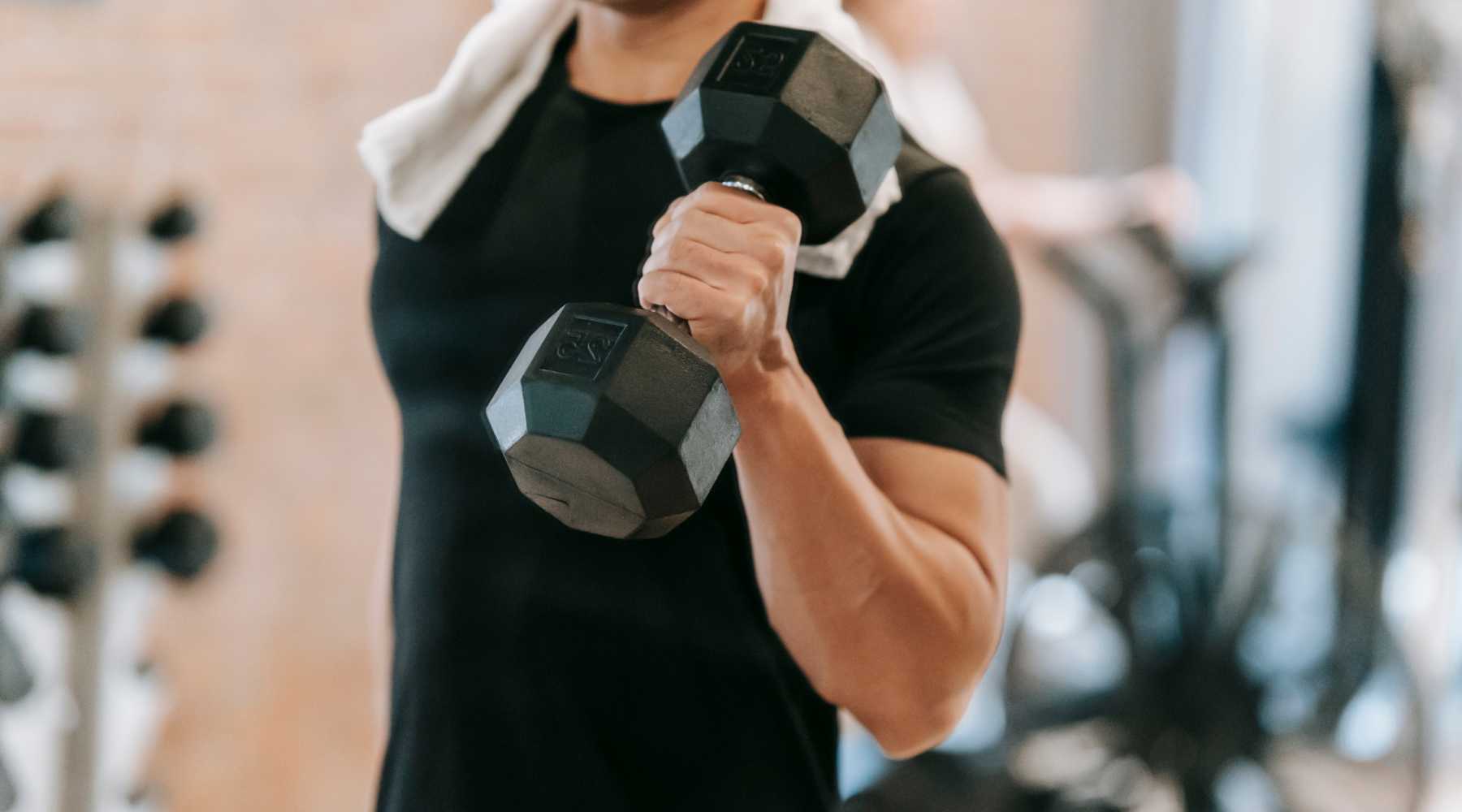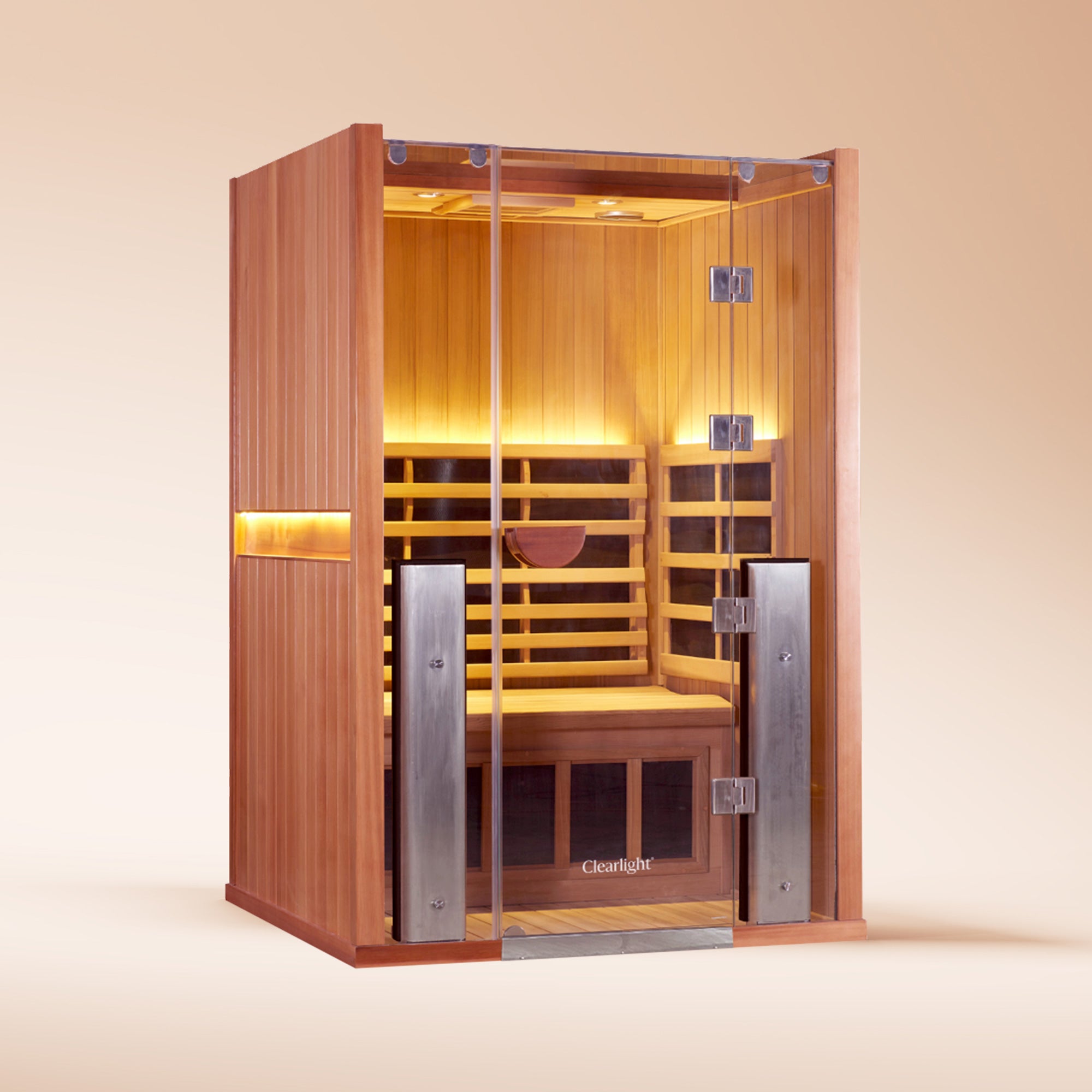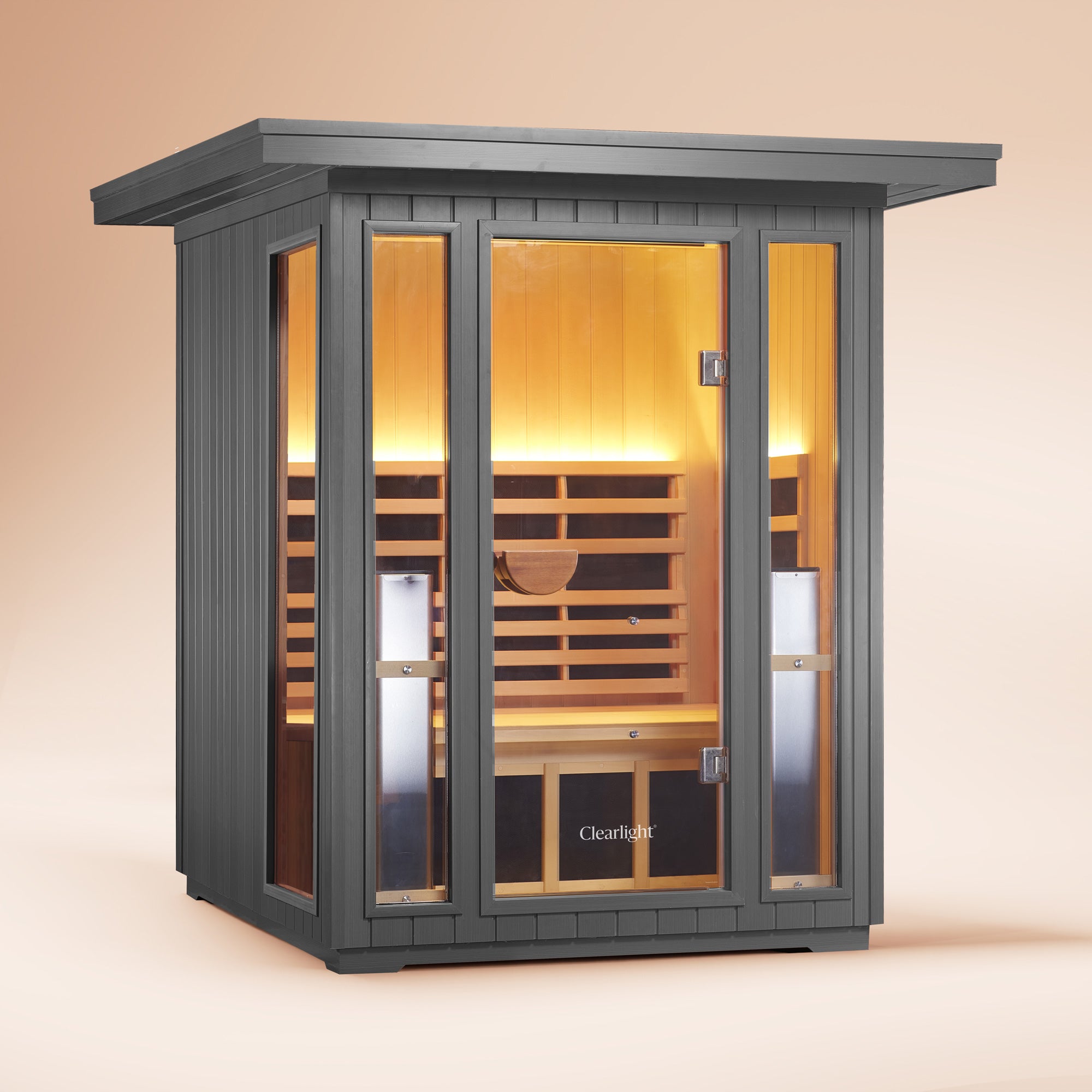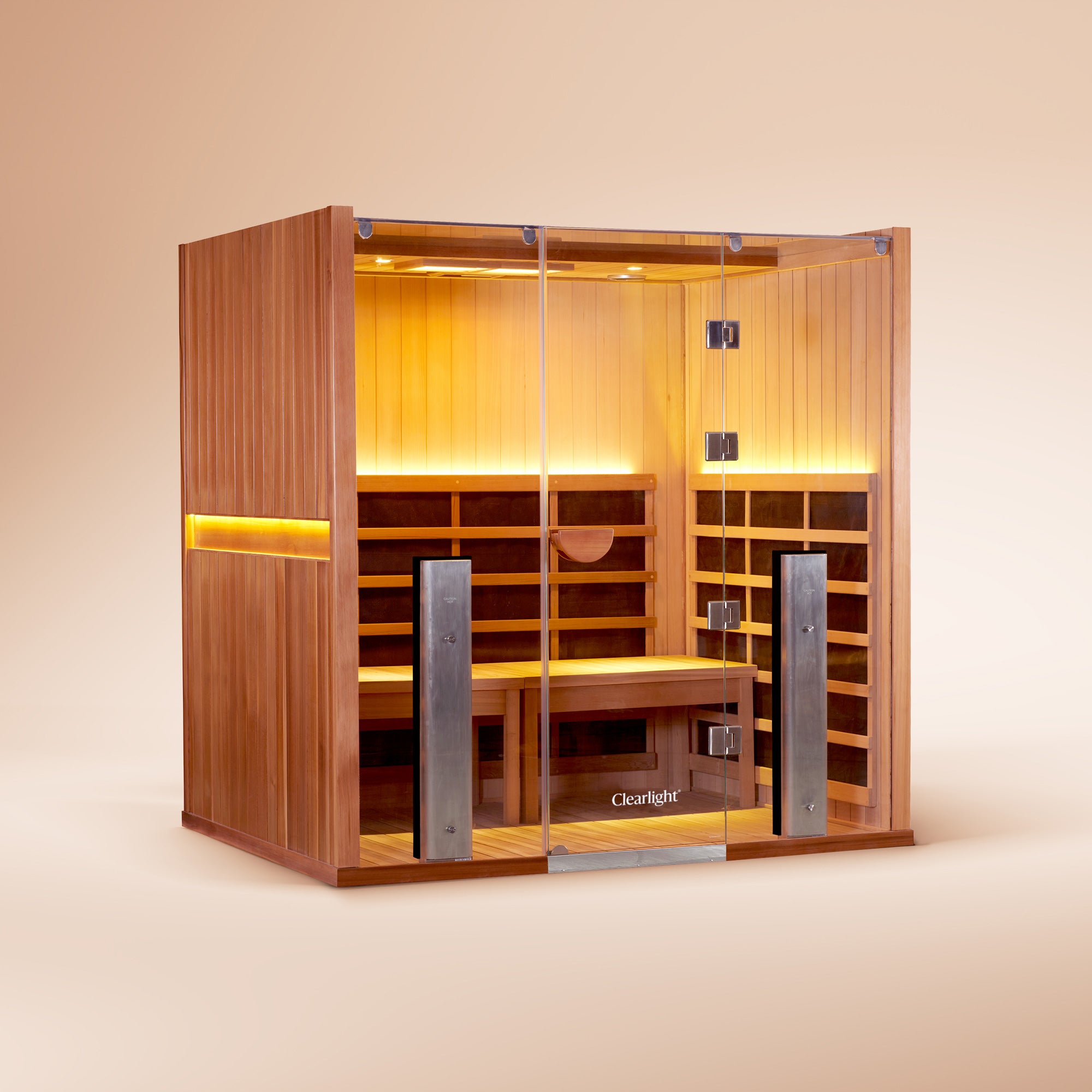In this blog post, I’m going to talk about how long you should use a sauna for muscle recovery. Other topics will be covered as well, such as using saunas to increase athleticism, make your muscles less sore, and even to detoxify to help athletic performance.
This blog post is part of a series on the infrared sauna health benefits. If you’re interested, you can read about health benefits such as heart and blood vessel heatlh, diabetes support, stress-reduction, and others.
But the topic of today is muscle recovery. I’ve written earlier blog posts on this topic, such as:
- How To Use A Sauna For Sore Muscles
- 4 Powerful Sauna After Exercise Benefits
- Infrared Sauna Calories Burned Per Hour
- How Many Calories Do You Burn in a Sauna?
I’ll cover parts of these topics in this blog post, but from the perspective of the optimal time to spend inside a sauna.
Benefits Of Sauna After Workout: When Should You Or Should You Not Use A Sauna?
The Sauna After A Workout Benefits
Below I’ll consider the benefits of using a sauna after workout. I’ll consider several domains, such as blood vessel health and circulation benefits, workout recovery, increases in heat tolerance, and more.
Let’s begin:
How Long To Sauna For Better Post-Workout Circulation And Blood Vessel Health
Blood circulation is vital for athletes. Without proper circulation, waste products cannot be removed from cells while nutrients won’t end up there (1; 2; 3: 4; 5; 6). But exactly how? Let me make a detour:
“Hyperthermia”, or overheating, causes so-called heat stress on the human body. Heat stress, in turn, activates your “heat shock proteins”. These heat shock proteins are like thermometers of your cells. Once they measure a very low or high temperature, the alarm bells go off and a physiological cascade is put in motion to deal with that heat.
The body thus considers that heat a threat to itself. When humans lived in nature, outside our warm or air-conditioned houses, excess heat or cold could be the end of you. And hence, an evolutionary pathway exists to prevent you from freezing to death or to die from heat stroke.
Now here’s what happens when you put that heat stress on your body:
Your tissues will develop a higher density of “capillaries”. Capillaries are the smallest of blood vessels. These tiny blood vessels are the final step where waste products are removed from your cells and nutrients are moved inside.
The good thing is that the more frequently you use a sauna, the more capillaries are created. These capillaries not only offer better blood flow but also improved oxygenation of your entire body.
Another thing that happens when you activate your heat shock proteins is that Nitric Oxide (NO) is released in your blood vessels. As a result of that NO, blood vessels all across your body expand.
The problem with ageing and sedentary behavour, or a poor diet, is the opposite: eventually our blood vessels and arteries get clogged by a process called atherosclerosis. NO prevents that and frequently releasing NO keeps your blood vessels healthy. The same, moreover, is directly true for the heart - blood flow around the heart improves the more sauna sessions you engage in.
Studies show that using a sauna for just 30 minutes already triggers the creation of new blood vessels and better circulation. For the best results, repeat this proces three to four times weekly.
Next up:

How Long To Sauna For Quicker Muscle Recovery And Workout Recovery
Lots of studies have investigated the effects of saunas after a workout (7; 8; 9; 10; 11; 12; 13; 14; 15; 16). I’ll summarise these studies below:
First of all, spending time inside a sauna is very psychologically relaxing. When comparing the stress levels of athletes if they’re going through an intense workout or whether they’re spending time inside a sauna, the sauna results in far lower stress levels. That fact alone makes the case that after a hard workout, a sauna is a great way to cool down in a psychologically relaxing way.
Saunas still place physiological stress on the body nonetheless. So if you use a sauna before a workout or competition, or an intensive sauna session just before your competition day, expect your performance to go down. That result is exactly what happened in research on swimmers, where three eight-minute sauna sessions the day before a swim reduced their performance.
Moreover, saunas are also the most frequently-used interventions for quicker recovery, next to massages and a long night of sleep. These outcomes have been found in questionnaires with endurance athletes. I do want to emphasise though that you cannot expect quick results here. The reason here, again, is that saunas tend to increase stress in the short term.
For you that means that workout recovery will be impeded in the short term, but enhanced in the long-term as the body adapts. For this very reason many sauna studies show short-term detrimental effects - if you use a sauna once and then test performance it tends to go down. Over time, performance increases though.
Now here’s the deal:
Far infrared light has a benefit over heat alone. With heat I mean heating up the air around you as happens in a traditional sauna. Infrared works very differently. Infrared light penetrates the human body and acts as a type of nutrient to your cells. For instance, infrared light can literally increase energy production in your cells by affecting so-called “mitochondria”. Infrared light can also charge the water in your cells (17).
Infrared light can penetrate the body by up to several centimetres. And, because many systemic effects are triggered by that infrared light penetrating a few centimeters, it can also affect deeper tissues of the body
For that reason, spending 30 minutes in a far infrared sauna with temperatures of up to 50 degrees Celsius has been proven to increase performance. Far infrared saunas are often deemed much more relaxing and less stressful on the body by users. One reason for being less stressful is that you don’t have to breathe in very hot air during your sessions.
As a result, power output goes up, even in endurance athletes, after a far infrared session. The theory here of researchers is that the far infrared light offered better improvements in the neuromuscular system than a traditional sauna because of the properties of far infrared light. “Neuromusculuar” here means the nervous system and the muscular system, and their interaction.
Secondly, using saunas over time also increases blood volume. That blood volume, in turn, leads to improvements in endurance. The volume of the blood plasma increases, for instance, as does the volume of red blood cells. Remember that red blood cells carry oxygen through out the body and remove CO2 and thus directly affect endurance.
During a 3-week period of three to four sauna sessions per week, sports performance increased by a whopping 2%. You may think that 2% isn’t too much but just think about how much improvement a marathon runner or sprinter would be if they could shave off 2% of their personal best?
And, if these results keep increasing over time, the benefits are mind-boggling.

How Long To Stay Inside A Sauna For Performance Enhancement?
Generally I recommend staying inside an infrared sauna for 30 minutes at the very least, if you’re a healthy athlete. If you’re in poor health - if you have a health condition, for instance - then consult your physician first and take it very slowly. Start with 15 minutes per day and monitor very well whether you recover properly from your sauna sessions.
Also, as stated before, it’s by far best to use a sauna after a workout. Using a sauna before a workout or competition can impair your performance.
Next up:











How Long Should You Sauna For Stress Reduction Benefits?
How Infrared Saunas Improve A Natural Immunity